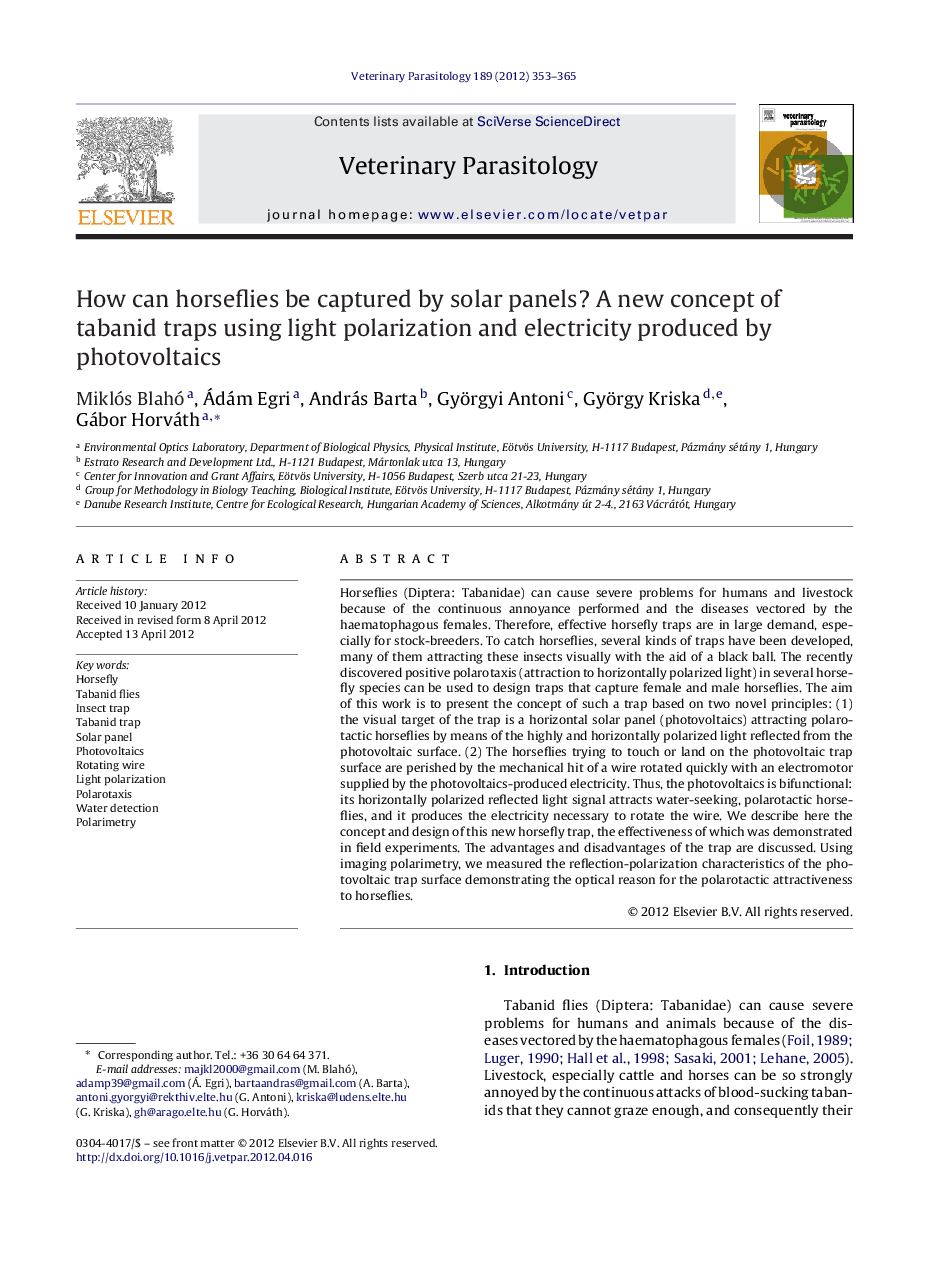| Article ID | Journal | Published Year | Pages | File Type |
|---|---|---|---|---|
| 5804862 | Veterinary Parasitology | 2012 | 13 Pages |
Horseflies (Diptera: Tabanidae) can cause severe problems for humans and livestock because of the continuous annoyance performed and the diseases vectored by the haematophagous females. Therefore, effective horsefly traps are in large demand, especially for stock-breeders. To catch horseflies, several kinds of traps have been developed, many of them attracting these insects visually with the aid of a black ball. The recently discovered positive polarotaxis (attraction to horizontally polarized light) in several horsefly species can be used to design traps that capture female and male horseflies. The aim of this work is to present the concept of such a trap based on two novel principles: (1) the visual target of the trap is a horizontal solar panel (photovoltaics) attracting polarotactic horseflies by means of the highly and horizontally polarized light reflected from the photovoltaic surface. (2) The horseflies trying to touch or land on the photovoltaic trap surface are perished by the mechanical hit of a wire rotated quickly with an electromotor supplied by the photovoltaics-produced electricity. Thus, the photovoltaics is bifunctional: its horizontally polarized reflected light signal attracts water-seeking, polarotactic horseflies, and it produces the electricity necessary to rotate the wire. We describe here the concept and design of this new horsefly trap, the effectiveness of which was demonstrated in field experiments. The advantages and disadvantages of the trap are discussed. Using imaging polarimetry, we measured the reflection-polarization characteristics of the photovoltaic trap surface demonstrating the optical reason for the polarotactic attractiveness to horseflies.
